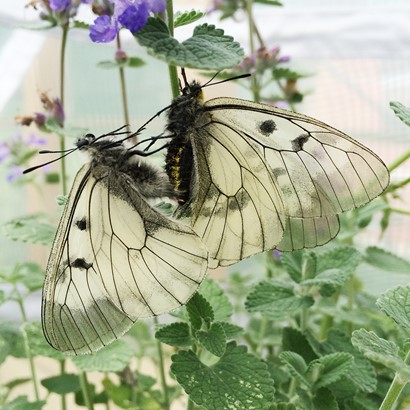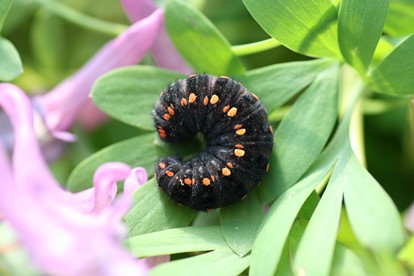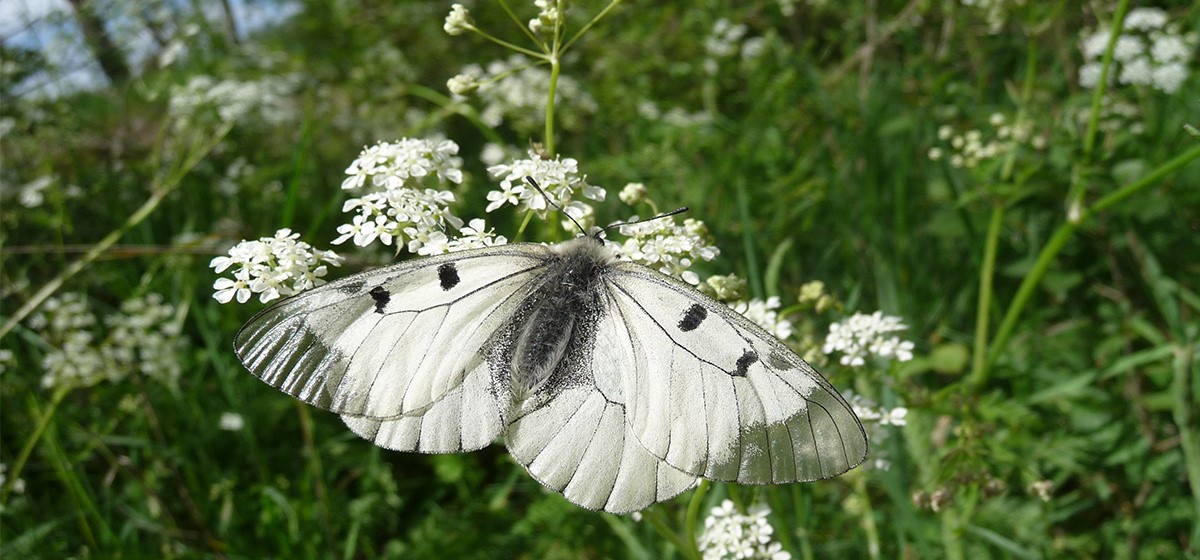Clouded Apollo butterfly conservation
The clouded Apollo butterfly (parnassius mnemosyne) is one of Sweden's most endangered butterfly species and is found only in small and fragmented populations in Blekinge, in the border areas between Uppsala and Stockholm County and in Västernorrland County. The species has declined sharply since the 1960s. The cause is not fully understood, but probably it's mainly due to changes in the habitat of the butterfly.
In Sweden, its habitat is mosaic meadows and pastures adjacent to deciduous forest edges with an abundant occurrence of the host plant corydalis. This type of habitat has disappeared in large parts of Sweden, partly due to overgrowth, afforestation, exploitation and excessive grazing.
In order to slow down and reverse this negative trend, great efforts are required. The habitats of the species must be restored and appropriate management of the areas must be put in place. As the species has a low dispersal capacity, breeding and release are also an important measure to bring the clouded apollo butterfly back into its former range.

What we do at Nordens Ark
Nordens Ark has been commissioned by the county administration in Blekinge, Stockholm and Uppsala to initiate breeding work for the clouded Apollo butterfly in order to eventually contribute species for release in suitable premises. The work takes place within the framework of the action program for threatened species where the County Administrative Board in Blekinge is the national coordinator for the action program.
Thanks to support from Maria Nila, we were able during 2024, in collaboration with the Archipelago Foundation, to fund habitat restoration for the Clouded Apollo in Norrtälje Municipality. The restoration work involved clearing mainly young alder and hazel from south-facing slopes within the nature reserve, areas that also contain plenty of the butterfly’s host plant, fumewort, as well as nectar sources such as ragged robin.
In order to build a breeding population of this species on Nordens Ark, a number of eggs have been collected from the populations of Blekinge, Uppsala and Stockholm. The collection is done without harming the existing wild population.
The breeding takes place in a purpose-built butterfly greenhouse on Nordens Ark. The eggs hatch in April and then the delicate larvae must directly find leaves of corydalis to eat. A month later they pupate. At the beginning of June, the fully formed white butterflies hatch and soon begin to mate and lay eggs. The eggs remain there until next spring.

News from the project – December 2025
In 2025, 468 Clouded Apollo larvae were released in Uppsala County.
An important part of the project now is to summarise the knowledge that Nordens Ark has gained over the years of breeding and releasing the Clouded Apollo, in order to share this information and support future conservation efforts.
In collaboration with
County Administrative Board of Blekinge, Stockholm, Västernorrland and Uppsala, WWF Sweden, The Swedish Postcode Lottery and Maria Nila



